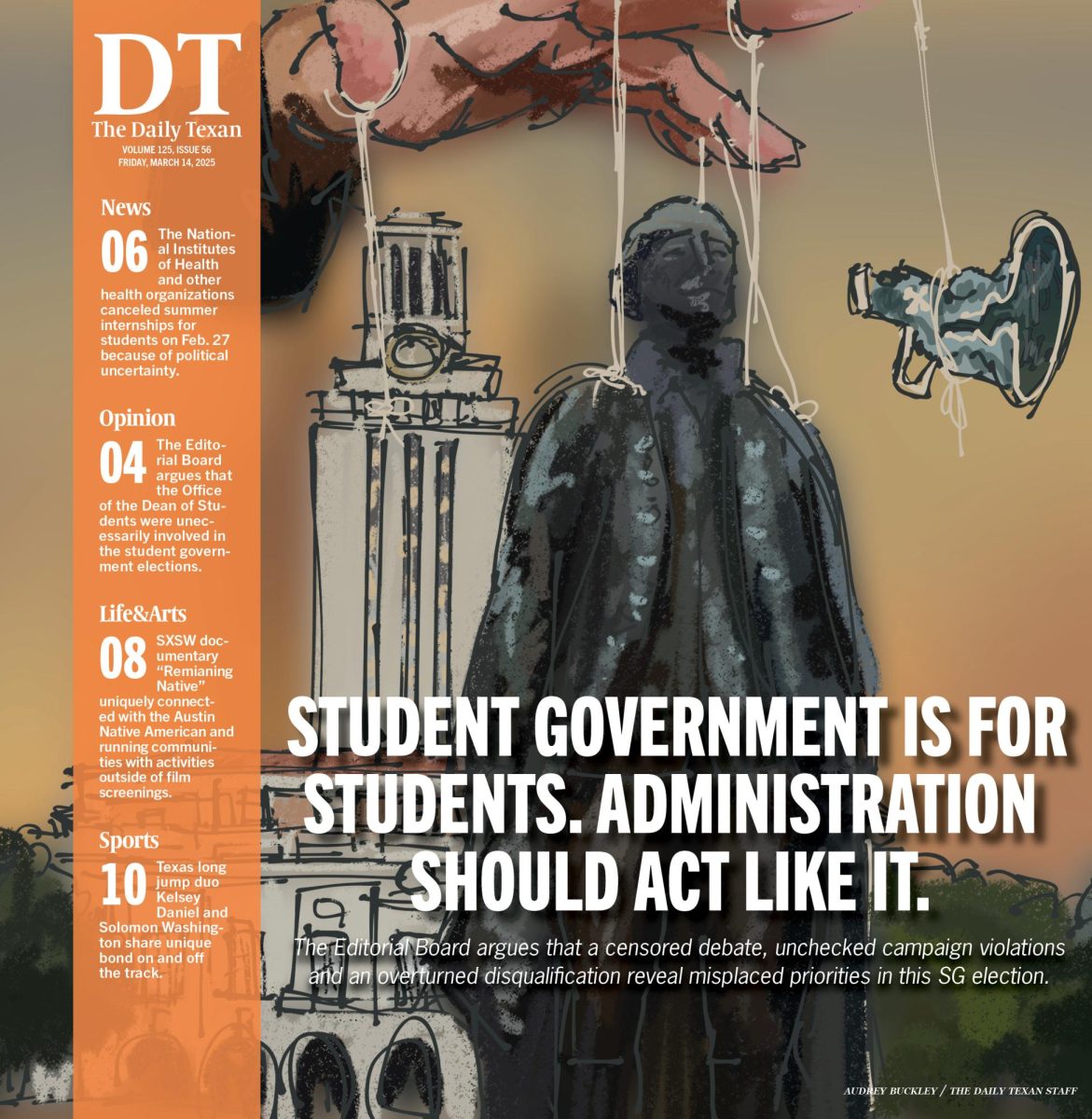University employees navigate paid leave policies
April 30, 2021
When Elsa Ramos, senior financial aid counselor for the Office of Scholarships and Financial Aid, slipped and fell in 2019, she had to get spinal fusion surgery. By using the University’s Sick Leave Pool, Ramos was able to take more than five months of paid time off.
If a University employee has to take leave, they must first use all their saved sick time. Then, they can apply to the Sick Leave Pool, which allows employees to donate their unused paid sick time to another employee. To apply to receive time from the pool, an employee must have already used all their accrued paid leave. The employee applying or one of their family members must be “suffering from a catastrophic condition,” or one that impacts one’s physical or mental health and requires treatment from a professional over a period of time, according to the Handbook of Operating Procedures.
Veronica Trevino, Financial and Administrative Services Communications media manager, said in an email that eligible employees gain eight hours of sick time each month they are employed, as dictated by the state.
Ramos said she is also currently on leave for a broken arm and is using saved sick time. Ramos said she also used her optional disability insurance during her spinal injury, which was a “lifesaver” and allowed her to get paid the entire time she was on leave.
“I think there are a lot of employees who don’t realize what short-term and long-term insurance means,” Ramos said. “If we were more aware of what it actually meant, maybe people would opt into it.”
Short-term insurance at UT covers up to 22 weeks, and long-term disability insurance can cover from one to five years, depending on the employee’s age, and can cover conditions sick leave may not, according to Trevino. Disability insurance payments are 60% of an employee’s paycheck.
Trevino said in an email that the University’s disability insurance begins coverage when an employee runs out of paid sick time, not when all paid time is used.
“Employees do not need to exhaust all of their paid time,” Trevino said in the email. “Employees with disability coverage may voluntarily elect to take their vacation leave simultaneously with short-term disability for additional income during their period (of) recovery.”
Cherie Amour Pittman, marketing coordinator for the Office of the Dean of Students, said when she needs to take leave related to a mental health condition, she alerts her supervisor and is able to take paid leave through her disability insurance.
“It makes it much easier for me to manage my workload and manage my personal life, (and) it takes a lot of pressure off,” Pittman said.
Pittman said everything related to her hospital stay was covered, partly from the Staff Emergency Fund, which provides temporary assistance to staff members facing emergencies and relies on donations.
The University provides multiple avenues for paid medical leave but does not provide paid family leave.
The Family Medical Leave Act is a federal law that requires employers to provide twelve weeks of unpaid leave for employees if they have a child, have an injury that prevents them from doing their job or to care for a family member.
The Faculty Welfare Committee filed legislation to gain paid family leave last year and it’s currently pending review from the Office of the Executive Vice President and Provost.
Ramos said she was able to navigate the leave request process thanks to helpful human resources staff, but it can be difficult alone.
“You have to know what questions to ask sometimes,” Ramos said. “Navigating through it can take time, and sometimes these emergencies come up, and you need to take care of them right away.”












